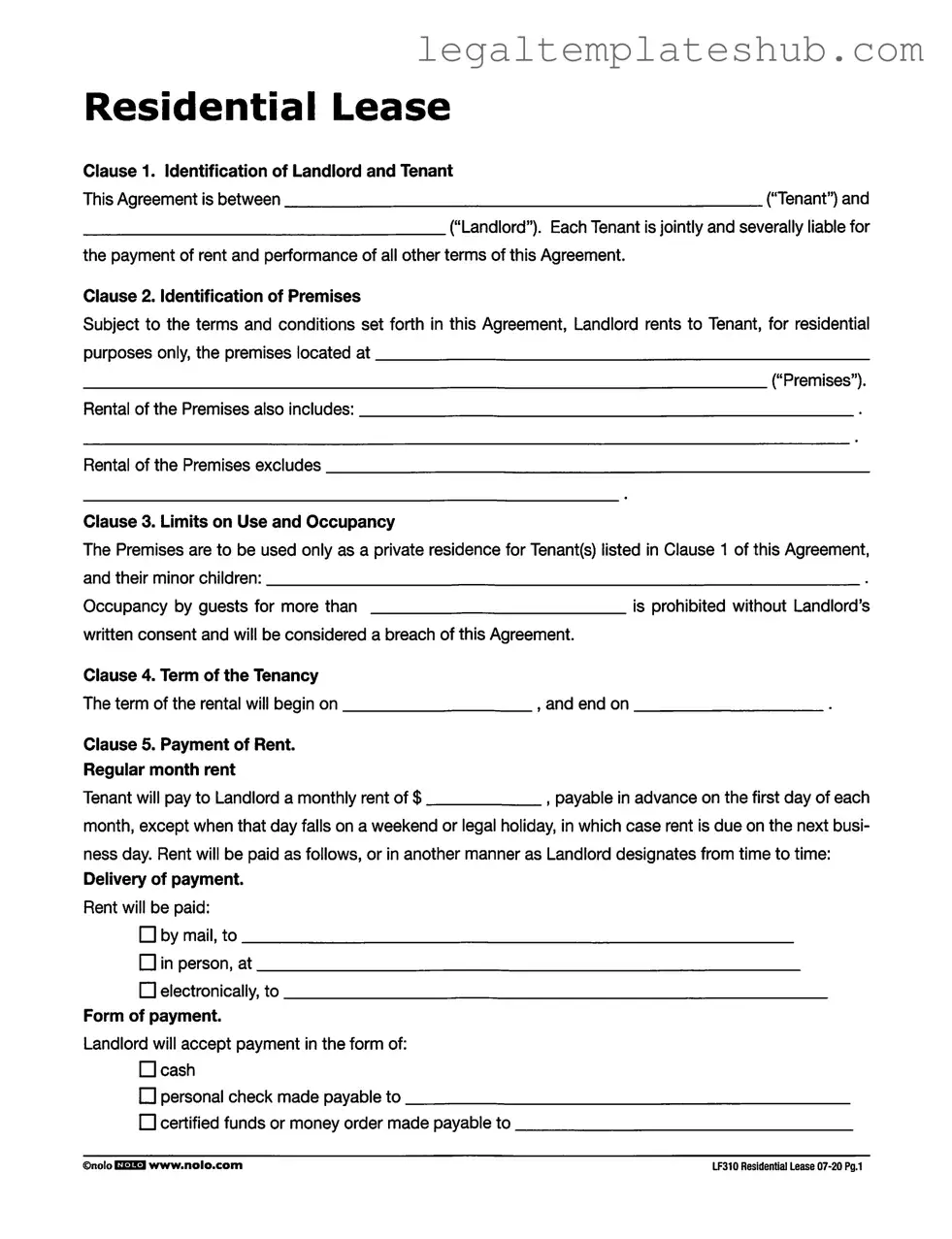Instructions on Filling in Lf310 Residential Lease
Filling out the LF310 Residential Lease form requires careful attention to detail. This form serves as a binding agreement between the landlord and tenant, outlining the terms of the rental arrangement. To ensure that both parties understand their rights and responsibilities, follow these steps to complete the form accurately.
- Identify the Parties: Fill in the names of the Tenant and Landlord in Clause 1. Make sure to include all tenants who will be living in the premises.
- Specify the Premises: In Clause 2, provide the complete address of the rental property. Include any additional information about what is included or excluded in the rental.
- Outline Use and Occupancy: In Clause 3, list the names of all authorized occupants, including minor children. Remember that unauthorized guests may breach the agreement.
- Set the Rental Term: In Clause 4, indicate the start and end dates of the rental period. Ensure the dates are clear and correct.
- Detail Rent Payment: In Clause 5, specify the monthly rent amount and the due date. Include how rent will be paid (e.g., by mail, in person, electronically) and the acceptable forms of payment.
- Address Late Charges: In Clause 6, state the number of days after which a late fee applies, along with the amount of the late charge and any daily penalties.
- Include Returned Check Policy: In Clause 7, acknowledge that any returned checks will lead to further demands for payment and possible legal action.
- Security Deposit: In Clause 8, indicate the amount of the security deposit and the conditions under which it will be returned after the tenant vacates.
- Utilities Responsibility: In Clause 9, list which utilities the tenant will pay and which will be covered by the landlord.
- Subletting Restrictions: In Clause 10, clarify that tenants cannot sublet or assign the lease without written consent from the landlord.
Once you have completed the form, review it carefully to ensure all information is accurate. Both the landlord and tenant should sign and date the lease to make it official. Keep a copy for your records, as it will serve as an important reference throughout the tenancy.
